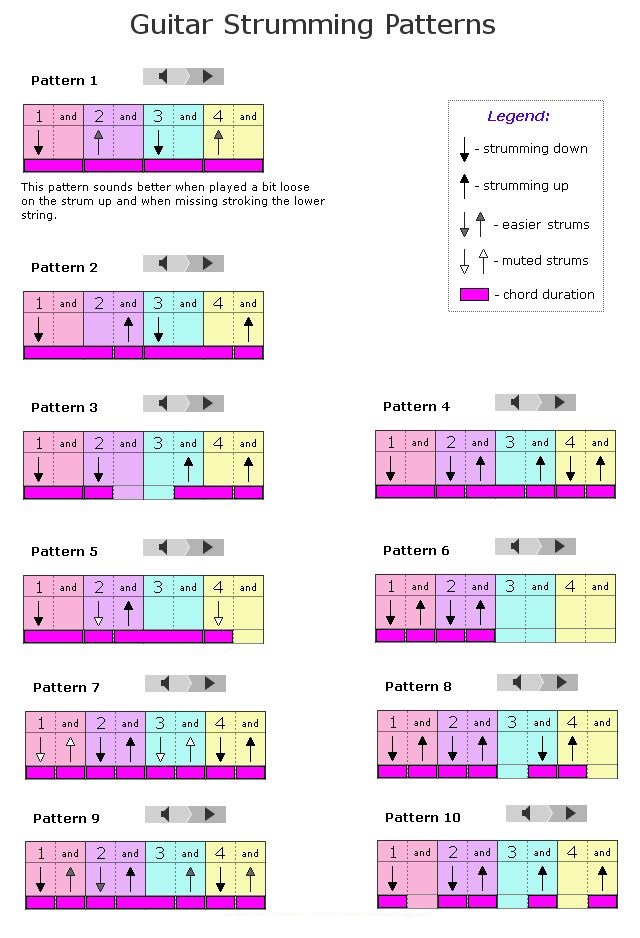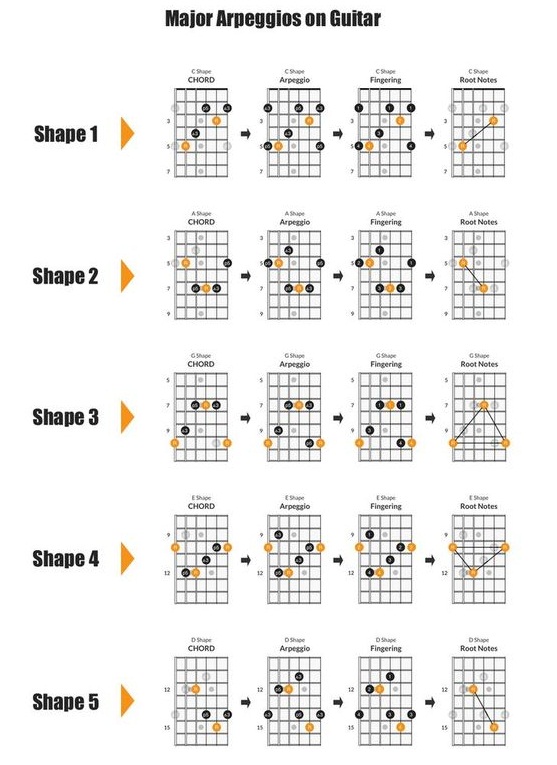Mastering rhythm and timing is crucial for any guitarist, as these elements are the heartbeat of music. Whether you’re playing solo, accompanying a singer, or jamming with a band, a solid sense of rhythm ensures your playing is cohesive, dynamic, and engaging. This guide delves deep into the concepts of rhythm and timing, offering insights and tips to enhance your guitar playing.
The Fundamentals of Rhythm and Timing
1. Understanding Time Signatures:
Time signatures are notations at the beginning of a piece of music that indicate how many beats are in each measure and what note value constitutes one beat. The most common time signature is 4/4, also known as “common time,” which means there are four beats per measure, and the quarter note gets one beat.
- 4/4 Time: Four beats per measure, with each quarter note receiving one beat.
1 2 3 4
| | | |- 3/4 Time: Three beats per measure, with each quarter note receiving one beat (often used in waltzes).
1 2 3
| | |- 6/8 Time: Six beats per measure, with each eighth note receiving one beat, creating a triplet feel.
1 2 3 4 5 6
| | | | | |2. Note Values and Subdivisions:
Understanding note values is essential for reading and playing rhythms accurately. Here are the basic note values and their subdivisions:
- Whole Note (♩): Four beats in 4/4 time.
- Half Note (♩): Two beats in 4/4 time.
- Quarter Note (♩): One beat in 4/4 time.
- Eighth Note (♪): Half a beat in 4/4 time.
- Sixteenth Note (♬): Quarter of a beat in 4/4 time.
3. Counting and Keeping Time:
Counting aloud while playing can help internalize the rhythm. For example, in 4/4 time, you would count “1, 2, 3, 4” for each measure. For eighth notes, you count “1 and 2 and 3 and 4 and,” and for sixteenth notes, you count “1 e and a 2 e and a 3 e and a 4 e and a.”
Strumming Patterns and Rhythm Guitar
1. Basic Strumming Patterns:
Strumming patterns are essential for rhythm guitar. Here are a few basic patterns to get you started:
- Downstrokes (D):
1 2 3 4
D D D D- Down-Up Pattern (D-U):
1 2 3 4
D U D U- Syncopated Pattern:
1 2 3 4
D - U D - U -2. Developing a Groove:
A groove is the feel or swing of the music. To develop a groove, focus on:
- Consistency: Maintain a steady rhythm with consistent strumming.
- Accents: Emphasize certain beats to add dynamics. For example, in a 4/4 pattern, accenting beats 2 and 4 can create a backbeat feel.


Techniques for Improving Rhythm and Timing
1. Use a Metronome:
A metronome is an essential tool for developing timing. Start practicing at a slow tempo, ensuring each note or chord falls precisely on the beat. Gradually increase the tempo as you become more comfortable.
2. Clap and Tap:
Clap your hands or tap your foot to the beat while playing. This physical connection to the rhythm helps internalize the timing.
3. Practice with Drum Tracks:
Playing along with drum tracks or backing tracks can simulate the experience of playing with a band, helping you lock into the groove.
4. Record Yourself:
Recording your practice sessions allows you to listen back and identify areas where your timing may be off. It’s a valuable tool for self-assessment and improvement.
Advanced Concepts in Rhythm and Timing
1. Syncopation:
Syncopation involves emphasizing off-beats or weaker beats, creating a more complex and interesting rhythm. Practicing syncopated rhythms can enhance your rhythmic versatility.
2. Polyrhythms:
Polyrhythms involve playing two different rhythms simultaneously. For example, playing a 3/4 rhythm over a 4/4 rhythm creates a polyrhythm. This advanced technique can add a unique texture to your playing.
3. Rhythmic Modulation:
Rhythmic modulation involves changing the tempo or time signature within a piece of music. This technique is often used in progressive rock and jazz to create dynamic and unexpected shifts in the music.
Practical Exercises for Developing Rhythm and Timing
1. Rhythmic Drills:
Practice clapping or playing single notes in various rhythmic patterns, such as straight quarter notes, eighth notes, and sixteenth notes. Use a metronome to keep a consistent tempo.
2. Strumming Exercises:
Practice different strumming patterns, focusing on maintaining a steady rhythm. Start with simple patterns and gradually incorporate more complex rhythms and syncopation.
3. Groove Practice:
Choose a simple chord progression and practice playing it with different grooves and accents. Experiment with different strumming patterns to find the groove that feels best for each progression.
4. Playing Along with Music:
Choose songs with clear and steady rhythms to play along with. Focus on matching the timing and feel of the original recording. This can be particularly effective for developing your sense of timing and groove.


Conclusion
Mastering rhythm and timing is a journey that requires patience, practice, and dedication. By understanding the fundamental concepts and incorporating practical exercises into your practice routine, you can develop a strong sense of timing and rhythm that will enhance your overall guitar playing. Whether you’re strumming simple chords or tackling complex syncopated rhythms, a solid foundation in rhythm and timing will make your music more engaging and dynamic. So grab your guitar, set your metronome, and start exploring the exciting world of rhythm and timing. Happy playing!
Here are some simple song accompaniments for guitar that use basic chords. These can be great for beginners to practice chord transitions and strumming patterns.
Song 1: “Three Little Birds” by Bob Marley
Chords: A, D, E
Verse and Chorus:
A D A E
|---0---0---0---0-|---2---2---2---2-|---0---0---0---0-|---0---0---0---0-|
|---2---2---2---2-|---3---3---3---3-|---2---2---2---2-|---0---0---0---0-|
|---2---2---2---2-|---2---2---2---2-|---2---2---2---2-|---1---1---1---1-|
|---2---2---2---2-|---0---0---0---0-|---2---2---2---2-|---2---2---2---2-|
|---0---0---0---0-|-----------------|---0---0---0---0-|---2---2---2---2-|
|-----------------|-----------------|-----------------|---0---0---0---0-|Strumming Pattern: D-D-U-U-D-U (D = Downstroke, U = Upstroke)
Song 2: “Knockin’ on Heaven’s Door” by Bob Dylan
Chords: G, D, Am, C
Verse and Chorus:
G D Am C
|---3---3---3---3-|---2---2---2---2-|---0---0---0---0-|---0---0---0---0-|
|---3---3---3---3-|---3---3---3---3-|---1---1---1---1-|---1---1---1---1-|
|---0---0---0---0-|---2---2---2---2-|---2---2---2---2-|---0---0---0---0-|
|---0---0---0---0-|---0---0---0---0-|---2---2---2---2-|---2---2---2---2-|
|---2---2---2---2-|-----------------|---0---0---0---0-|---3---3---3---3-|
|---3---3---3---3-|-----------------|-----------------|-----------------|Strumming Pattern: D-D-U-U-D-U
Song 3: “Stand By Me” by Ben E. King
Chords: G, Em, C, D
Verse and Chorus:
G Em C D
|---3---3---3---3-|---0---0---0---0-|---0---0---0---0-|---2---2---2---2-|
|---3---3---3---3-|---0---0---0---0-|---1---1---1---1-|---3---3---3---3-|
|---0---0---0---0-|---0---0---0---0-|---0---0---0---0-|---2---2---2---2-|
|---0---0---0---0-|---2---2---2---2-|---2---2---2---2-|---0---0---0---0-|
|---2---2---2---2-|---2---2---2---2-|---3---3---3---3-|-----------------|
|---3---3---3---3-|---0---0---0---0-|-----------------|-----------------|Strumming Pattern: D-D-U-U-D-U
Song 4: “Horse With No Name” by America
**Chords: Em, D6add9/F#
Verse:
Em D6add9/F#
|---0---0---0---0-|---0---0---0---0-|
|---0---0---0---0-|---3---3---3---3-|
|---0---0---0---0-|---2---2---2---2-|
|---2---2---2---2-|---0---0---0---0-|
|---2---2---2---2-|-----------------|
|---0---0---0---0-|---2---2---2---2-|Strumming Pattern: D-D-U-D-U-D-U
Tips for Practicing:
- Start Slow: Begin at a slower tempo to ensure each chord rings out clearly.
- Smooth Transitions: Focus on smooth transitions between chords by practicing the switch between two chords repeatedly.
- Strumming Consistency: Maintain a consistent strumming pattern to keep the rhythm steady.
- Listen and Play Along: Listen to the original song to get a feel for the rhythm and strumming pattern, then try to play along.
By practicing these simple accompaniments, you’ll build a solid foundation for your guitar playing and gain confidence in your ability to switch between chords and maintain a steady rhythm. Enjoy playing!



